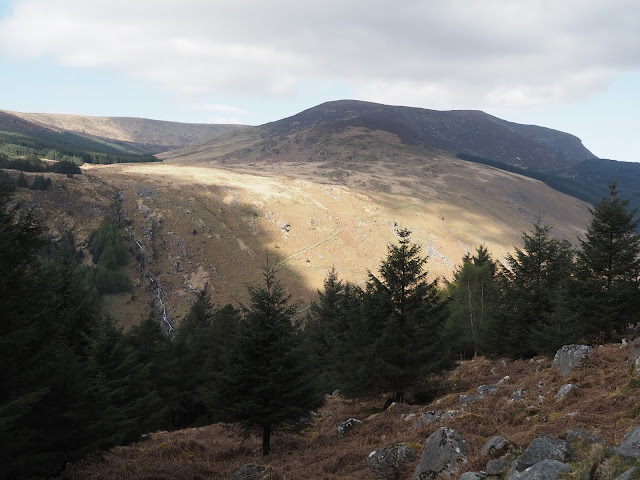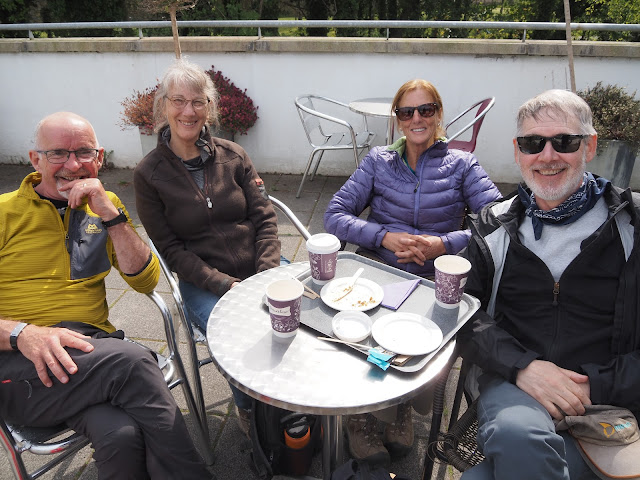We're taking a day off today.
We walked fifty three miles over the past six days and I took about 600 photographs of mostly of trees, bogs and water, if you don't count the pictures of sheep.
Trees
Where they weren't part of a plantation, and doomed to be felled by their forty-fifth birthday, trees grew to a great height and age, and were so covered in moss, lichen, vines and holly that you could hardly see the tree.
Stands of beech trees flourished around Glendalough.
And there were signs of a tremendous urge to survive, like these silver birch, knocked over some time ago, but now growing upright.
Or this brand new pine tree, growing out of a stump.
Bogs
Where the weren't any trees on the Wicklow Way, there were blanket bogs, started around 7,000 years ago by humans clearing trees from the mountain tops. Clearing trees made things just right for soil acidification, the creation of "iron pan" which prevented drainage, and the accumulation, millimetre by millimetre, of peat. Early humans realized to their dismay that you couldn't grow anything in a peat bog. Then humans learned you could burn the peat. And so began another round of cutting.
But you can see why they call it "blanket" bog.
 |
| What are you looking at? Hybrid deer peeking just over the rise on the bog. |
 |
| Bogs as far as the eye can see. |
 |
| Bogs all around. |
 |
| Bogs on Tribadden mountain. |
 |
| Walkways have been built to protect the bog with a wish to regenerate the parts lost to human trodding. |
Water
Ireland, like everywhere else, is seeing changes in weather patterns. For example, we were outside for six days at the end of April and didn't see a drop of rain. So, Kevin our guide explained, every waterfall we saw was a pale shadow of its normal self, shrunken by the lack of rainfall. They still seemed pretty cool. As did other bodies of water.
 |
| The whitest people in the world enjoying the lake by Glendalough. |
 |
| Lynne and Keira at Glendalough. |
 |
| An unidentified stream by the road, near Curtlestown. |
 |
| Mine run-off above Glendalough. |
 |
| Just at the left side of the photo, a white zig zag of a waterfall. Also apparent, allegedly, are some deer, or perhaps sheep or maybe even some cows, according to Kevin. |
 |
| The Guinness lake. |
 |
| The Poulanass waterfall. |
 |
| The Avonmore River by Oldbridge - stocked with brown trout and waiting for your fishing hook. |
Thanks for reading!
Tomorrow we're going to Belfast and the Giant's Causeway!
Karen

















































